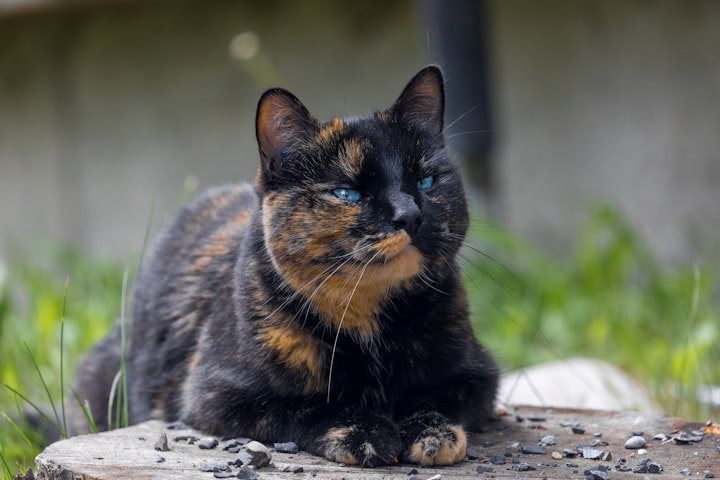
What is a tortoiseshell cat?
The name tortoiseshell cat itself does not express an independent cat breed. It is about the unmistakable black-red coloring and patterning of the cat's fur.
This pattern, reminiscent of a tortoiseshell, appears as a two-tone hair structure in various cat breeds. These can be both short-haired and long-haired, such as:
• British shorthair
• British long hair
• german longhair cat
• common European cat
• Maine coon
• Persian
• Siberian
What does Carey mean?
The name tortoiseshell cat comes from the Taíno term tortoiseshell, which designates a sea turtle. With some imagination, a certain similarity can be perceived between the black-red pattern of the fur and that of a tortoise shell.
To designate the black-red pattern, breeders also use the term tortie. This word comes from the English designation of the tortoiseshell: tortoiseshell.
Tabby-patterned tortoiseshell cats are also known as torbies. This is an invented word that comes from combining tabby and tortie. A tabby print includes different typical patterns. All tabby cats have an M-shaped pattern on their forehead.
Buys
The tortoiseshell pattern is a freak of nature, so these cats cannot be systematically bred. If you like tortoiseshell cats or tricolor cats, take a look at the breeds we mentioned earlier.
The price of a tortoiseshell cat or tricolor tortoiseshell cat depends on the breed. In addition, the requirements for keeping and caring for these animals are guided by the corresponding breed.
How does the tortoiseshell print come about?
All colors, shades, and patterns of cat fur come from two basic colors: black and red. The pigment eumelanin is responsible for black hair and pheomelanin, from red.
These two pigments can be present in different proportions, thus giving rise to the different chromatic variants. In the tortoiseshell cat, some parts of the fur are black and some are red.
But the feline world is not only made up of black, red, or black and red animals. There are many more factors that influence the color and pattern of a cat.
For example, the dilution gene affects coat color dilution. Thus, from black comes the color blue (bluish-gray), and from red, the color cream. In the tortoiseshell cat, the dilution gene gives a cream-blue tortoiseshell pattern.
The S gene is the cause of white spots. Turn a black-red tortoiseshell cat into a tricolor lucky cat
Why are almost all tortoiseshell cats female?
Almost all tortoiseshell cats are female. This is because the cat coat color gene is located on the X chromosome.
Females have two X chromosomes, one from the mother and the other from the dad. Genetically speaking, a female cat can be black and red, e.g. eg, if the mother has black hair and her father, red.
As the kitten develops in the womb, one of the two X chromosomes is deactivated. But this disconnect is not uniform. The X chromosome that is left out can be maternal or paternal. This means that sometimes black is suppressed and other times red. This causes spots of different colors to appear on the hair.
Guys have just a single X chromosome and one Y chromosome. Therefore, they can only have one color of hair: black or red. They cannot have red and black spots.
But there is always an exception that confirms the rule: there are males that, due to a genetic abnormality, have two X chromosomes and one Y chromosome (Klinefelter syndrome). Due to the two X chromosomes, they can be black and red.
Cats with this anomaly are sterile, that is, they cannot reproduce.
About the Creator
Abu Saleh
Content writer & Affiliate marketer. https://bestpetslover.com






Comments
There are no comments for this story
Be the first to respond and start the conversation.